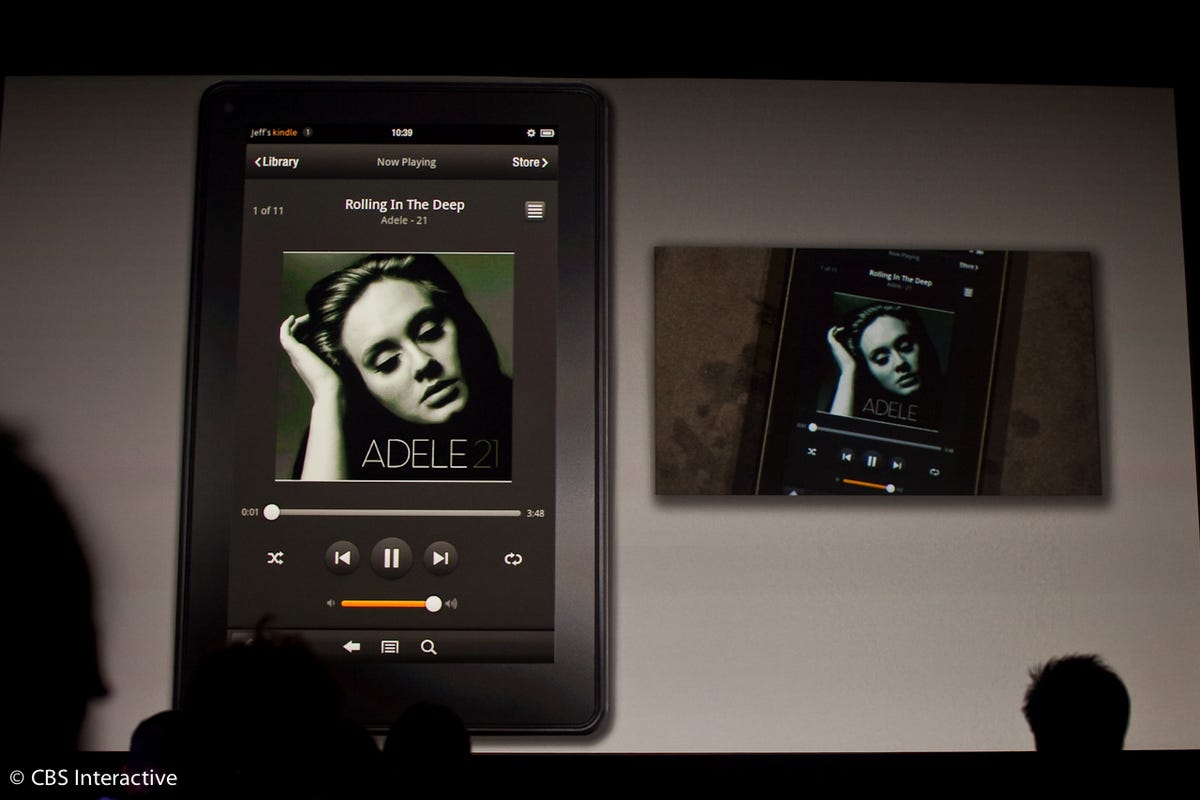

Now playing:
Watch this:
Amazon’s Kindle Fire has content, price to compete
1:30
commentary Well, the Kindle Fire just up and ruined it for all the other tablet makers.
Amazon just put the rest of the tablet world on notice by pricing the Kindle Fire at $199, less than half of the $500 mark that the industry has gravitated toward as a standard price. By doing so, Amazon is redefining for consumers just how much they need to pay for a quality tablet.
“It makes it much more difficult for pure tablet vendors–other than Apple–to sell products at a profit,” said Avi Greengart, who covers consumer electronic products for Current Analysis.
The exception, as Greengart notes, is the Apple iPad, which blazed the trail for this current wave of tablets and benefits from hundreds of thousands of applications, allowing it to evolve past a media device and into a tool for the office, classroom, or hospital. It also has the Apple reputation, which justifies its premium pricing.
That can’t be said for the other tablets in the market. Even the devices running on the latest tablet-specific version of Android, known as Honeycomb, aren’t as bulletproof as the iPad, and lack the apps to be more than just a nice entertainment device.
In truth, this trend was already in the works for months. Hewlett-Packard’s TouchPad fire sale was the most dramatic example, but it hasn’t been the only one. Recently, a combination of discounts, rebates, and store gift cards brought the price of Research In Motion’s BlackBerry PlayBook down to $300. Motorola Mobility CEO Sanjay Jha acknowledged the initial high price of the Xoom tablet hurt it in the early days.
While the TouchPad at $99 remains an anomaly, and a largely unprofitable one at that, it is a signal that consumers aren’t willing to pay $500 for just any tablet.
Related stories:
Amazon unveils Kindle Fire tablet for $199
Amazon unveils trio of Kindle e-ink readers
Amazon lights a Fire with its Kindle tablet (photos)
Amazon’s Kindle Fire just nuked the tablet market: Winners and losers
That’s where the Kindle Fire comes in. Sure, Amazon positions it more as a souped-up e-reader as opposed to a full-blown tablet. The specifications are paltry when compared to Samsung Electronics’ Galaxy Tab 10.1 or the Sony Tablet S. It lacks a camera, 3G access, a microphone, and comes with only 8 gigabytes of storage.
But the tablet, which also runs on Android, can browse the Internet, play games, and access the Kindle library of digital books. Most importantly, it gives users unlimited access to Amazon’s library of videos through Amazon Prime. As a media device, it’s comparable to the other tablets out there. And for now, that’s largely the reason why consumers buy tablets.
Amazon enjoys an unfair advantage when it comes to selling hardware. It can afford to sell you a tablet or e-reader at a lower price because it can make it back on the content you’re more likely to buy for that device. Amazon Prime, for example, costs $79 a year, while episodes of old shows can be had for $1 a piece, while books can range from free to $15. In addition, it controls its own distribution: Amazon’s online store, which also gets the benefit of huge traffic.

Sarah Tew/CNET
“To control the distribution channel is a massive advantage for them,” said Roger Entner an analyst at Recon Analytics.
That’s a far cry from a Motorola or Samsung Electronics, which makes its profit off of selling the tablets themselves. If they cut the price of their devices, they are sacrificing their margins with no potential for returns in the future. They similarly don’t have any distribution outlets of their own, instead relying on their carrier and retail partners.
Knowing this, a lot of the rival consumer electronics manufacturers must be cringing at the prospect of competing with the Kindle Fire.
Updated at 11:18 a.m. PT: to include an additional comment on Amazon’s distribution advantage.



